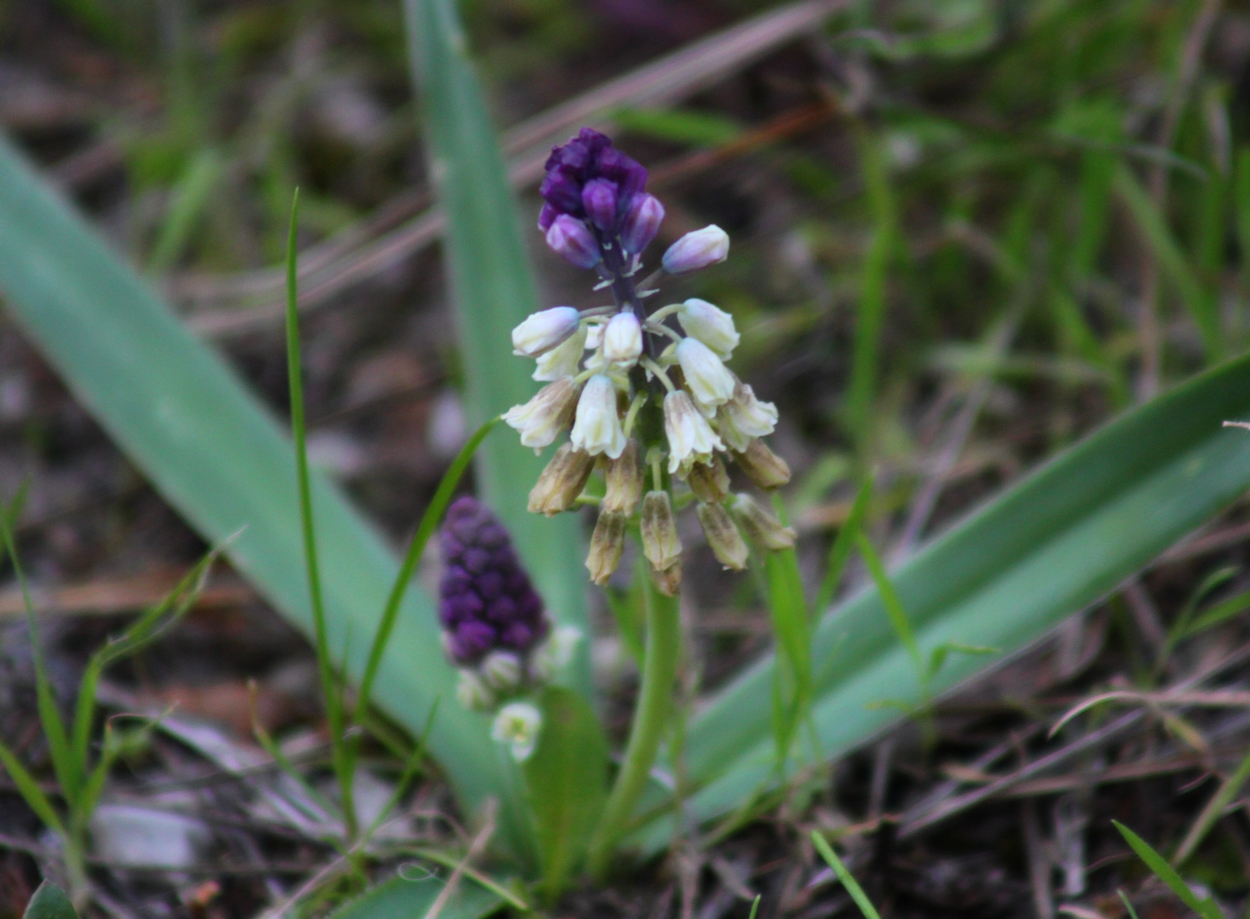Blue-Tipped Grape Hyacinth
(Bellevalia macrobotrys)

Description
Bellevalia macrobotrys, commonly known as the Turkish Hyacinth or Blue-Tipped Grape Hyacinth, is an exquisite flowering plant that belongs to the Asparagaceae family. Revered for its unique and captivating floral display, this species is native to the eastern Mediterranean region, primarily found in Turkey and the surrounding countries. With its vibrant blue flowers and architectural appeal, Bellevalia macrobotrys has become a sought-after ornamental plant, adorning gardens and landscapes around the world. This article delves into the various aspects of this plant, including its taxonomy, morphology, habitat, cultivation, and cultural significance. Taxonomy and Classification Bellevalia macrobotrys falls under the kingdom Plantae, division Tracheophyta, class Liliopsida, order Asparagales, and family Asparagaceae. It is part of the Bellevalia genus, which comprises approximately 90 species of flowering plants. The genus name "Bellevalia" is derived from the French botanist Pierre Jean Marie Delavay's honor, Jean Baptiste Armand Isidore Belleval. Morphology The Turkish Hyacinth is a perennial bulbous plant that showcases a distinctive charm. It typically grows to a height of 15 to 30 centimeters (6 to 12 inches), with its stem emerging from a bulbous underground structure. The basal leaves are linear and narrow, measuring around 15 centimeters (6 inches) in length. The foliage features a vibrant green color, providing an attractive backdrop for the stunning flowers. The inflorescence of Bellevalia macrobotrys is a compact spike, composed of numerous bell-shaped flowers. These flowers, with their remarkable blue coloration, are the defining characteristic of the species. Each flower consists of six petals fused together to form a bell shape, with the tips opening up to reveal a delicate arrangement. The upper part of the petals is a striking electric blue, while the lower part is a pale greenish-white color, creating a captivating contrast. Additionally, the flowers produce a mild, pleasant fragrance that adds to their allure. Habitat and Distribution Bellevalia macrobotrys is endemic to the eastern Mediterranean region, primarily found in countries such as Turkey, Lebanon, Syria, and Israel. Within its natural habitat, this species thrives in well-drained soils, often colonizing rocky slopes, meadows, and open woodland areas. It has adapted to varying climatic conditions, tolerating both cold winters and hot, dry summers. Cultivation and Propagation The Turkish Hyacinth has gained popularity among gardening enthusiasts due to its exceptional beauty and relative ease of cultivation. Here are some essential tips for successfully growing and propagating Bellevalia macrobotrys: Climate and Light: Bellevalia macrobotrys thrives in regions with a Mediterranean climate, characterized by mild, wet winters and dry summers. It prefers full sun to partial shade exposure, although it can tolerate some shade. Soil Requirements: Well-drained soils are crucial for the healthy growth of this species. Sandy or loamy soils with good organic matter content are ideal. It is important to avoid waterlogged or compacted soils, as they can lead to bulb rot. Planting: Bulbs should be planted in the autumn, around 5 to 8 centimeters (2 to 3 inches) deep, with a spacing of 5 to 10 centimeters (2 to 4 inches) between them. Planting in groups or clusters can enhance the visual impact of the flowers. Watering: During the growing season, it is essential to provide regular watering to keep the soil moist. However, it is crucial to avoid overwatering, as excessive moisture can cause the bulbs to rot. Once the flowering period ends, gradually reduce watering to allow the plant to enter its dormant phase. Fertilization: Bellevalia macrobotrys benefits from a balanced fertilizer application during the growing season. Use a slow-release fertilizer or incorporate well-rotted compost into the soil before planting to provide essential nutrients. Maintenance: Deadheading faded flowers can help redirect energy towards bulb development rather than seed production. After the foliage turns yellow and begins to wither, it is important to refrain from cutting it back. The plant relies on the dying foliage to replenish the energy reserves in the bulb for the next growing season. Propagation: Bellevalia macrobotrys can be propagated through offsets, bulb division, or seeds. Offsets, which are small bulbs that form around the parent bulb, can be carefully separated and planted in a new location. Bulb division can be done during the dormant phase, ensuring that each division has sufficient roots. Growing from seeds is also possible but requires patience, as it may take several years for the plants to reach flowering maturity. Cultural Significance Bellevalia macrobotrys holds cultural and symbolic significance in the regions where it naturally occurs. In Turkey, for example, the plant is known as "Cam Gözlü Sümbül," meaning "Hyacinth with Glass Eyes." It is associated with the legendary character Nasreddin Hodja, a humorous figure in Turkish folktales. According to the stories, Nasreddin Hodja's donkey consumed the Turkish Hyacinth bulbs, causing the animal's eyes to turn blue. As a result, the flowers became popularly known as "Hyacinth with Glass Eyes." Furthermore, Bellevalia macrobotrys is cherished for its aesthetic appeal and often used in floral arrangements and cut flower displays. Its striking blue color and delicate form make it a favorite choice for adding a touch of elegance to bouquets and garden landscapes. Conservation Status and Future Outlook While Bellevalia macrobotrys is not currently considered endangered, it is crucial to monitor its populations and protect its natural habitats. Habitat loss, urbanization, and overcollection for horticultural purposes pose potential threats to the species. Conservation efforts should focus on preserving the regions where this plant thrives and raising awareness about its importance in maintaining biodiversity. Conclusion Bellevalia macrobotrys, with its stunning blue flowers and graceful presence, stands as a remarkable representative of the plant kingdom. Its vibrant beauty, coupled with its adaptability and relative ease of cultivation, has made it a beloved addition to gardens and landscapes worldwide. By understanding its taxonomy, morphology, habitat, cultivation, and cultural significance, we can appreciate and safeguard the captivating Turkish Hyacinth for generations to come.
Taxonomic tree:







